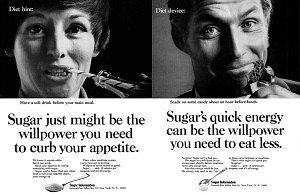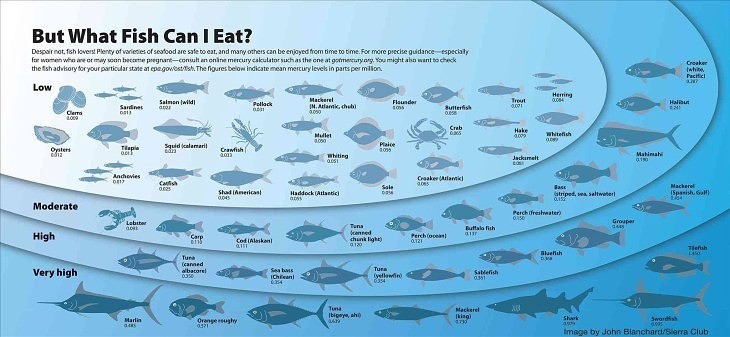The Way We Used To Eat – The Real Paleo Diet
Without a doubt, our food used to be very different than the food we eat today. Our prehistoric diet consisted of fresh fruit, wild vegetables, roots, wild herbs, nuts, seeds, honey, some wild grains, seafood, and meat. We, as well as our primate antecedents that came before us, evolved to thrive on this plant based diet.
For literally millions of years, we consumed a diet rich in nutrients, low in toxins, high in fiber, and rich in fats. As good as that diet was, it wasn’t ideal. Many prehistoric foods had naturally occurring toxins in them and were lower in nutrients than the best foods available today. Plus, humans were restricted to the foods available in the area they foraged.
In modern times, we can improve upon our prehistoric diet, provided the core concept resembles the same ratios of macronutrients. These ratios of nutrients changed dramatically for the first time, ten thousand years ago when we adopted agriculture. It was then that our diet, and our society, changed forever.
Agriculture spread from one society to another, gradually becoming the dominant subsistence strategy. Farming further reduced variety and increased grains, a change that resulted in a significant decline in health. There is a lot of evidence to support the notion that a high carbohydrate diet, especially when compounded over generations, has a dramatically detrimental effect on human health and vitality. This decline in health can be seen across time and across many cultures.
The average Spanish conquistador was dwarfed in size by the average North American Native American. Spaniards ate a diet high in carbohydrates and low in protein, with limited fruits and vegetables. Native Americans of North America consumed many plants, some fruits and nuts, wild game, some carbohydrates (mostly from squash and corn), and for many tribes, plenty of seafood. The natives in North America could look down on the Spaniards by as much as a half a foot.
South American Natives and Mexican natives are and were significantly smaller in stature than their Northern counterparts. South American Natives relied on agriculture. With farming came a denser population whose diet focused on grains, leading to much higher carbohydrate consumption and less access to meat, nuts, herbs, and vegetables.
The effect that diet has on size is fascinating. Many people attribute genetics to differences in size. Among individuals with a similar diet, this is true. But between populations, like the American population and the Mexican population, diet, over generations, greatly contributes to the average difference in size. Although the effect diet has on size is very interesting, diet has many more profound effects on all aspects of health. Differences in diet lead to different diseases.
Many experts predict that our current population will not live as long as previous generations. Diabetes, heart disease, strokes, hypertension, kidney disease, and obesity are all on the rise, and these diseases are predicted to noticeably shorten the American lifespan. But the story of the American diet doesn’t end there. Our diet did not go from the best in the world to one of the worst overnight, and it won’t go back to the best quickly, either. To understand where we are going, and how diet affects us, it is helpful to understand where we have been and how our diet has affected us in the past.
Freedom has long been lauded as the reason why so many Europeans crossed the ocean. Though religious freedom was certainly a factor, food was probably the bigger incentive. During the time period when Europeans were first settling America, Europe was a very crowded continent. Farming opportunities for European settlers in America were the best in the world. Europeans came in droves to realize the American dream, the dream of being able to feed one’s family, to live in abundance, an abundance of food. It was a modest dream to be sure, but when you can’t feed your family or your family is fed in a substandard manner, it is a dream worth great risk and sacrifice to achieve.
Within generations, a profound difference in size and prosperity emerged between Americans and their European counterparts. This difference in size can still be seen today, but the size gap between Americans and Europeans during modern times is disappearing.
In the early 1800s, most Americans lived on or near farms. Foods were restricted by seasonal availability, and cooking was done on an open hearth, a labor-intensive method.
In 1820, the cast iron stove was introduced. For Americans living in the 1800s this was as timesaving as a microwave is versus a modern day oven. Unlike a microwave, a cast iron stove didn’t eradicate nutrients anymore than the previous cooking method did, it just saved time.
In 1892, the U.S. government collected height and weight data on a representative sample of U.S. men. In white males aged 40-69 years old, obesity was estimated to have been at 4%.
From that time to modern times, a number of changes happened to our food supply, including how food is prepared, how it is produced, its availability, and what foods we choose to eat.
These are some of the changes:
- 1910s – Hydrogenated (trans fats) were introduced into the food supply
- 1920s – Gas and electric stoves became common
- 1920s – Refrigerators became common
- 1920s – Canned foods and frozen foods were introduced
In the early 1900s, foods like Nathan’s Hot Dogs, Oreo Cookies, Wonder Bread, Yoo-Hoo, Wheaties, Kool-Aid, VanCamp’s Canned Pork and Beans, and Reese’s Peanut Butter Cups were introduced into the American diet and became very popular.
Trans fats dramatically extend the shelf life of foods. Proctor & Gamble learned methods for hydrogenating cottonseed oil from a German scientist. This fat was originally intended for soap, but it resembled lard, so Proctor & Gamble successfully marketed it as Crisco. (The name comes from crystallized cottonseed oil.)
New technologies not only allowed for easy storage of food, they also allowed for a more diverse diet, a diet less beholden to seasonal availability. For the sake of convenience, many more ready- to-eat foods were developed. Refrigeration technology did not just change the foods in the home, it changed the foods available in stores and restaurants as well. And refrigerated train cars, in use since the 1840s, allowed for shipping foods long distances.
Refrigeration and electricity created a technological platform from which commercialized food became more commonplace. This change is important because it is not as profitable for commercially prepared food to be healthy as it is for it to simply taste good and have a long shelf life. It is easier and more profitable for food manufacturers to misrepresent their foods as healthy, than it is for them to actually be healthy.
Consider these ads:
This misrepresentation is achieved by focusing on a few upsides to commercially prepared foods while blatantly ignoring the numerous downsides. Food manufacturers don’t attempt to convince us how great sugar is anymore. Their methods have grown more sophisticated. For instance, “fat free” while loaded with sugar; zero trans fat, when high in other fats; “all natural,” when genetically modified; made with real blueberries, when everything else was made in a lab; and my personal favorite, “fortified with vitamins & minerals,” which means this Frankenfood is so dead that in order for it to have any nutrition at all, the manufacturer had to add the cheapest, most unnatural vitamins and minerals known to man.
A Changing Food Budget
In 1889, 93% of all food spending was for food consumed at home. In 2009, only 51% of all food spending was spent on food to be consumed at home. Of the food purchased to be consumed at home, much of it was highly processed and commercially prepared.
Changing Activity Levels
While the standard American diet drastically changed, so did the physical activity levels of the average American. Two hundred years ago, most professions were physically demanding and exercise was a way of life. Over time, this has dramatically changed. Some Americans exercise a few times a week, but it is common for many to never exercise at all.
Obviously, this has had profound effects on American health.
Trading one Disease for Another
The first alarms were sounded in the late 1970s. A senate committee pushed its “Dietary Goals for the United States” urging Americans to eat less fat. It was thought that red meat, eggs, and dairy were killing us.
By the 1980s, nearly a million Americans were dying of heart disease each year.
Again, Americans were told to eat less fat and eat more carbohydrates. These recommendations were built into a monument and lauded to the public as the salvation for American health: The Food Pyramid.
The Food Pyramid recommended carbohydrates as the staple of a healthy diet. Fat was a killer, or so we were led to believe, therefore recommendations for fat intake were drastically reduced. A $150 million dollar study, which pushed the same message, came fast on the heels of these recommendations. The study said to eat less fat and avoid foods high in cholesterol in order to reduce your risk of heart disease.
Americans followed this advice and consumption of grains and sugar rose. Americans are now sicker than before. Deaths from heart disease have dropped a bit, but obesity and diabetes rose dramatically.
Whole milk has been banned from most of our public schools, but strawberry milk, chocolate milk, and soda machines are usually available. Whole plain yogurt is usually difficult to find in a grocery store, but low fat, sugar filled, artificially flavored, artificially colored options are everywhere. The prevailing belief is that these low fat options are healthier, even when loaded with sweeteners, than whole milk.
Though deaths from heart disease have declined, cardiovascular disease remains the nation’s number # 1 killer. According to Time Magazine, diabetes has increased 166% from 1980 to 2012. The low-fat trend was directed toward lowering cholesterol. And yet, few realize that high fructose corn syrup, found in nearly every processed food, is today’s leading cause of high cholesterol.
A Downward Trend
In every measurable way, Americans are in worse health than ever before. It is widely predicted that our lifespan is shortening; the generations that came before us will outlive us, and we are likely to outlive the generations that succeed us.
Most Americans simply want to lose weight, but some aspire to be healthier as well. For either goal or both goals, many Americans have lost confidence in government guidelines and have begun to look for other diets to follow. In the absence of sound advice from the government, many have turned elsewhere for ways to lose weight or to improve their health.
This has led to waves of diet fads, diets that rise and fall in popularity. These are some of the more popular diets:
- The Pritikin diet
- The Atkins diet
- The Gluten Free diet
- The South Beach diet
- The Mediterranean diet
- Weight Watchers
- The Zone Diet
- Volumetrics
- Raw Food Diet
- NutriSystem
- Macrobiotic Diet
- The Paleo Diet
Many of the diets have been designed and championed by doctors.
The Pritikin diet basically echoes government recommendations, with less meat. The South Beach diet is very similar, with fewer carbs and more lean meats like fish and poultry. The Atkins diet is a protein-based weight loss plan that is low in nutrition and very unhealthy. It has been called a nutritionist’s nightmare. The gluten free diet works best if there is a reason for one to avoid gluten. Otherwise, unless one cuts back on carbs, it is unlikely to be beneficial to anyone trying to lose weight. Weight Watchers stresses eat what you want but in moderation and constantly count calories.
The Mediterranean diet is a seafood, wine, veggie, and whole grain weight loss plan similar to South Beach. The Zone diet suggests a rigid focus on macronutrients in regards to protein, carbs, and fat. Nutrisystem is the ultimate have someone else do it for you plan with all meals pre made and pre measured. Volumetrics promotes a focus on fruits and vegetables. Because of their fiber content, they make you feel more full. The raw food diet allows for unlimited raw vegan food.
These were among the most popular diets. Many diet fads were highly restrictive, absurd, dangerous, and downright scary like the grapefruit diet, the cabbage soup diet, the vinegar diet, and the liquid diet. Other approaches included the T.V. frozen dinner diet and even a Twinkie diet. The most dangerous and harmful diets were the diets that weren’t even based on food like the cigarette diet (whenever you’re hungry, just smoke), the eat sweets before a meal diet, or, even more crazy, the tapeworm diet, the baby food diet (substitute some of your meals with baby food), and worst of all the cotton ball diet, which recommended that you actually eat cotton balls dipped in juice. This is a choking hazard and can cause intestinal blockages, both of which can kill you. It was crazy, but these were all diets were practiced by some Americans.
Despite the variety of diets, popular and obscure, safe and dangerous, on average, Americans are fatter than ever before. Most Americans eat slightly less red meat and eat more lean meat, but they eat more sugar and more highly processed and refined foods. The CDC predicts that by 2030 up to 42% of the U.S. population will be obese, and 11% will be severely obese.
Experts do not agree on the health effect of grains and sweets. In Georgia, the only cereals WIC will pay for are cereals that contain some kind of sugar – corn sugar, sugar cane, or sugar from beets. Fruit juice sweetened and unsweetened cereals are considered health food and are not eligible for purchase under the program.
Over time, some foods have gone up in demand, while others have fallen in popularity. Sugar consumption from sugar cane has dropped 35% while corn based sweeteners (mostly high fructose corn syrup) consumption has risen by 8,853%. It’s not that Americans choose to eat corn syrup, they choose to eat processed foods, and high fructose corn syrup is added to nearly every processed food.
The current government guidelines are only a little different than the original food pyramid. The current recommendations are still high in grains, but the recommendation for fruits and vegetables is higher.
Conclusion
We recommend a diverse, whole food, plant-based diet. A full 80% of your diet should consist of raw, fresh, organic produce – more vegetables than fruits. Meats should be organic. Nuts and seeds should be soaked or sprouted. Grains should be limited and gluten should be avoided if any illness is present. Dairy should be organic and raw or limited. Omega 3 fatty acids from flaxseed oil, fish oil, or a blended oil and oily fish should be added to your diet. Clean water is also essential.
You should avoid all artificial flavors, colors, and preservatives; MSG; high fructose corn syrup; trans fats; and GMOs. Seriously limit or eliminate all processed sugar.
For more information about a truly healthy diet, read the 80% Raw Food Diet. Boost your nutrition with increased vitamins, minerals, and nutrients, learn how to make your own Total Nutrition Powder.
Recommended Supplements:
Further Reading:
- 80% Raw Food Diet
- Is the Paleo Diet a Fraudulent Fad or the Healthiest Diet To Hit Mainstream? Could It Be Both?
Sources:
- The Height Gap – The New Yorker
- The American Diet – Stephan Guyenet
- Debunking The Paleo Diet – Christina Warinner
- Processed Foods History – Modern Pioneer Mom
- The Rise and fall of trans fat: A history of partially hydrogenated oil – LA Times
- The Ten Most Famous Fad Diets of All Time – Everyday Health


